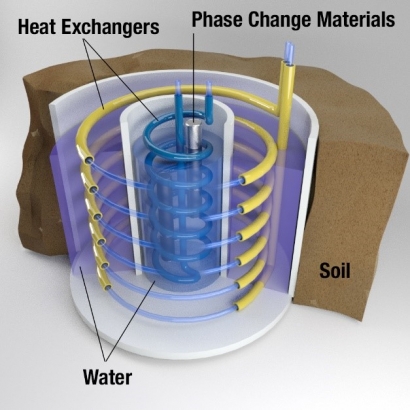
The system is installed underground and stores excess electricity from renewable resources like solar power as thermal energy through a heat pump. The system comprises underground tanks containing water and phase change materials that absorb and release energy when transitioning between liquid and solid states.
ORNL’s design relies on inexpensive materials and is installed at shallow depths to minimize drilling costs. The stored energy can provide hours of heating in the winter or cooling in the summer, shaving peak demand and helping homeowners avoid buying electricity at peak rates.
“Shifting demand during peak times can help utilities better manage their loads while saving consumers money and encouraging greater use of renewable energy,” said ORNL’s Xiaobing Liu.
The team published results of the system’s performance from a simulation in the January 5 issue of Applied Thermal Engineering.
Graphic: ORNL researchers have developed a system that stores electricity as thermal energy in underground tanks, allowing homeowners to reduce their electricity purchases during peak periods while helping balance the power grid. Credit: Andy Sproles, Oak Ridge National Laboratory/U.S. Dept. of Energy

